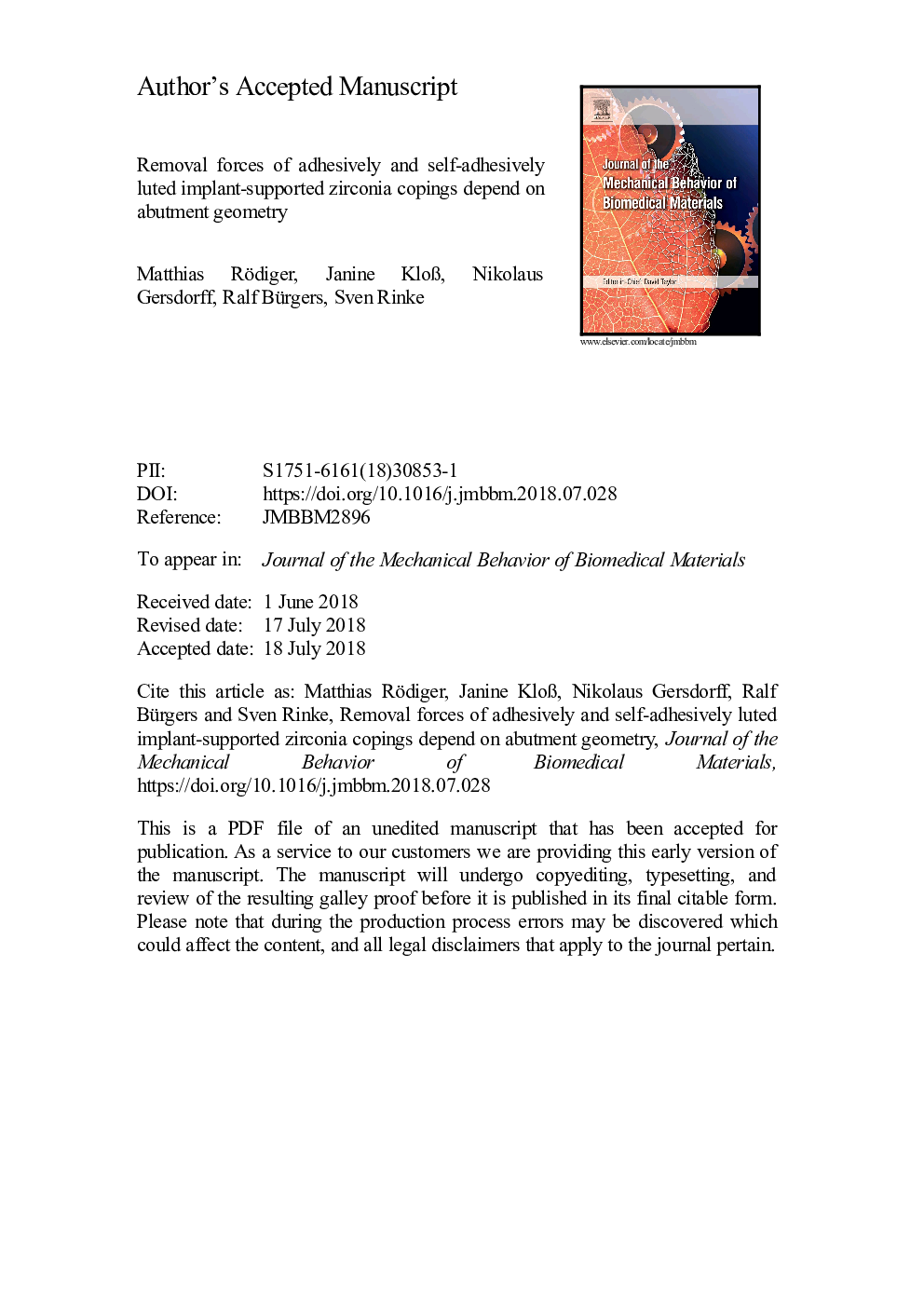| Article ID | Journal | Published Year | Pages | File Type |
|---|---|---|---|---|
| 7206851 | Journal of the Mechanical Behavior of Biomedical Materials | 2018 | 14 Pages |
Abstract
This in vitro study evaluated the effects of different abutment axial heights on the retentiveness of adhesively and self-adhesively luted zirconia copings. Ankylos implants were embedded in resin blocks. Two groups of titanium abutments (“long”, height: 6.79â¯mm, taper: 4.8°; “short”, height: 4.31â¯mm, taper: 4.8°; Compartis-ISUS, DeguDent) were used for the luting of CAD/CAM-fabricated zirconia copings (Compartis, DeguDent) with an adhesive (Multilink Automix; Ivoclar Vivadent) and a self-adhesive (RelyX Unicem; 3M ESPE) composite. After water storage and 5000 thermocycles (5â¯Â°C/55â¯Â°C), retention forces were evaluated using a universal testing machine (Zwick). Significant differences were determined via two-way ANOVA and t-tests with Bonferroni-Holm correction. Significant interactions between abutment geometry and luting agents were observed. RelyX Unicem showed the highest levels of retentiveness, irrespective of the varying abutment geometries (mean values long/short: 487.7â¯N/447.9â¯N). When Multilink Automix was used, removal forces were significantly lower (311.7â¯N/101.1â¯N) and negatively affected by the use of the shorter abutments. Customized long abutments supported better retention forces than customized short abutments for both luting agents.
Related Topics
Physical Sciences and Engineering
Engineering
Biomedical Engineering
Authors
Matthias Rödiger, Janine KloÃ, Nikolaus Gersdorff, Ralf Bürgers, Sven Rinke,
